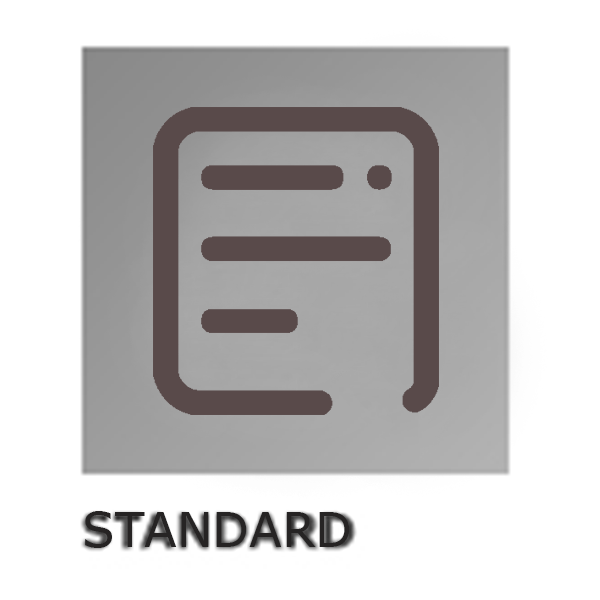1.1This test method covers and is required to evaluate the performance of engine oils intended to satisfy certain American Petroleum Institute (API) C service categories (included in Specification D4485). It is performed in a laboratory using a standardized high-speed, single-cylinder diesel engine.4 Piston and ring groove deposit-forming tendency and oil consumption is measured. The piston, the rings, and the liner are also examined for distress and the rings for mobility.
1.2The values stated in SI units are to be regarded as standard. No other units of measurement are included in this standard.
1.2.1Exceptions-Where there is no direct SI equivalent such as screw threads, National Pipe Threads/diameters, tubing size, or where there is a sole source supply equipment specification.
1.3This standard does not purport to address all of the safety concerns, if any, associated with its use. It is the responsibility of the user of this standard to establish appropriate safety, health, and environmental practices and determine the applicability of regulatory limitations prior to use. Being an engine test method, this standard does have definite hazards that require safe practices (see Appendix X2 on Safety).
1.4The following is the Table of Contents:
Section Scope 1 Referenced Documents 2 Terminology 3 Summary of Test Method 4 Significance and Use 5 Apparatus and Installation 6 Intake Air System 6.2.1 Exhaust System 6.2.2 Fuel System 6.2.3 Oil Consumption System 6.2.4 Engine Oil System 6.2.5 Oil Heating System 6.2.5.1 Oil Sample Valve 6.2.5.2 Engine Coolant System 6.2.6 Engine Instrumentation 6.2.7 Reagents and Materials 7 Oil Samples 8 Preparation of Apparatus 9 General Engine Assembly Practices 9.1 Complete Engine Inspection 9.2 Copper Components 9.3 Engine Lubricant System Flush 9.4 Engine Piston Cooling Jets 9.5 Engine Measurements and Inspections 9.6 Cylinder Head 9.7 Valve Guide Bushings 9.8 Fuel Injector 9.9 Piston and Rings 9.10 Cylinder Liner 9.11 Compression Ratio 9.12 Engine Timing 9.13 Engine Coolant System Cleaning Procedure 9.14 Calibration and Standardization 10 Test Cell Instrumentation 10.1 Instrumentation Standards 10.2 Coolant Flow 10.3 Re-calibration Requirements 10.4 Fuel Injectors 10.5 Air Flow 10.6 Intake Air Barrel 10.7 Fuel Filter 10.8 Oil Scale Flow Rates 10.9 Calibration of Test Stands 10.10 Extending Test Stand Calibration Period 10.11 Test Run Numbering 10.13 Humidity Calibration Requirements 10.14 Calibration of Piston Deposit Raters 10.15 Procedure 11 Engine Break-in Procedure 11.1 Cool-down Procedure 11.2 Warm-up Procedure 11.3 Shutdowns and Lost Time 11.4 Periodic Measurements 11.5 Engine Control Systems 11.6 Engine Coolant 11.6.1 Engine Fuel System 11.6.2 Engine Oil Temperature 11.6.3 Exhaust Pressure 11.6.4 Intake Air 11.6.5 Post-Test Procedures 11.7 Piston Ring Side Clearances 11.7.1 Piston Ratings 11.7.2 Referee Ratings 11.7.3 Ring End Gap Increase 11.7.4 Cylinder Liner Wear 11.7.5 Cylinder Liner Bore Polish 11.7.6 Photographs 11.7.7 Calculation and Interpretation of Results 12 Test Validity 12.1 Calculations 12.2 Quality Index 12.2.1 Oil Consumption 12.2.2 Report 13 Forms and Data Dictionary 13.1 Test Validity 13.2 Report Specifics 13.3 Precision and Bias 14 Precision 14.1 Bias 14.1.4 Keywords 15 Annexes Engine and Parts Warranty Annex A1 Instrument Locations, Measurements, and Calculations Annex A2 Cooling System Arrangement Annex A3 Intake Air Mass Flow Sensor Installation Annex A4 Fuel System Design and Required Components Annex A5 Oil System Annex A6 Exhaust and Intake Barrel Piping Annex A7 Humidity Probe Installation (Location) Annex A8 Return Goods Authorization (Claim Form) Annex A9 Engine Assembly Information Annex A10 Flushing Instructions and Apparatus Annex A11 Warm-up, Cool-down and Testing Conditions Annex A12 Piston and Liner Rating Modifications Annex A13 Additional Report Forms Annex A14 Test Report Forms Annex A15 Appendixes Various Examples for Reference Purposes Appendix X1 Safety Appendix X2
1.5This international standard was developed in accordance with internationally recognized principles on standardization established in the Decision on Principles for the Development of International Standards, Guides and Recommendations issued by the World Trade Organization Technical Barriers to Trade (TBT) Committee.






